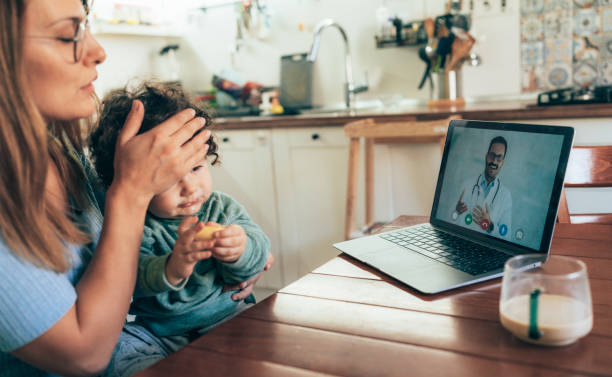How Can The Power IoT Enhance Telehealth Services?
Telehealth, or care delivery from a distance, has grown explosively in recent years. More and more people are opting for virtual doctor visits, making medicine more accessible than ever before, but telehealth can go even further. The Internet of Things (IoT) and the power of efficient IoT Services and vendors could take telehealth to the next level. Prior to the COVID-19 pandemic, telehealth accounted for only 1% of healthcare in the United States. Now over 70% of doctors say they are motivated to use it more, and 75% say it helps them deliver better care. Using IoT devices to provide this virtual assistance could further enhance its benefits. Let’s take a look at some of these new and impressive possibilities.
IoT In Healthcare
Wearable devices and IoT-enabled sensors enable healthcare professionals to improve patient care, eliminate billing and reporting errors, and increase operational efficiency. IoT can be a vital tool to help the healthcare industry manage and analyze patient data in clinics and remotely as well. Read on to learn more about the power of IoT and how it can transform the world of telehealth.

Remote Patient Monitoring
One of the main ways IoT can improve telehealth services is by enabling medical professionals to monitor patients remotely. For example, wearable devices can track signals such as heart rate, blood pressure, and body temperature and send them to doctors in real time. This gives doctors a complete picture of a patient’s health without an in-person checkup.
This real-time remote monitoring can significantly boost the accessibility of healthcare. For example, Medicare now covers telehealth services, but many patients have to make in-person visits when doctors need to check blood pressure. Wearables allow doctors to view that information remotely, enabling people with limited mobility, tight schedules, or health concerns to get help wherever they are.
Emergency Alerts
Life Alert allows patients to contact emergency services with a button, but wearable devices can do this automatically. Similarly, wearable health devices could monitor patient health determinants and alert people if they detect anything unusual. You can also send these alerts to doctors and other healthcare professionals. They could also respond to a wide range of topics. As a result, faster treatments lead to better results.
Medication Reminders
Less urgently, the IoT could notify patients when they need to take their medication. About 40-50% of people with prescriptions for chronic conditions don’t take all the doses or don’t take them when they should. Wearable medical devices could track medication schedules (patients don’t have to own their own). They could remind people when to take a certain medication and tell them how much to take. Some sensors could even detect if someone has missed a dose and send that information to their GP. Then, when a problem occurs, it is easier to identify possible causes.
Future Opportunities For Innovation
New telehealth opportunities may emerge as IoT technology advances. For example, wearables can deliver them using microscopic needles to inject the right dose at the right time rather than just reminding people to take their medications. Many insulin pumps already do this, and new wearables could extend the concept to other conditions and drugs. Future IoT technologies could go even further and allow doctors to perform surgeries remotely. For example, remote-controlled robotics allows people worldwide to receive treatment from leading surgeons. These devices are unlikely to populate homes, but keeping them in medical centers could improve global access to quality care. It may not be what people envision when they think of telehealth, but it can save lives.
The Power Of IoT And Telehealth
Bringing IoT into telehealth is a logical step. This technology’s remote connectivity and data collection make it ideal for enabling and extending telehealth services. Patients worldwide will benefit. Telehealth itself is a relatively new one, but still, it has seen impressive growth. Combining IoT with IoT devices will usher in a new era of healthcare affordability.
